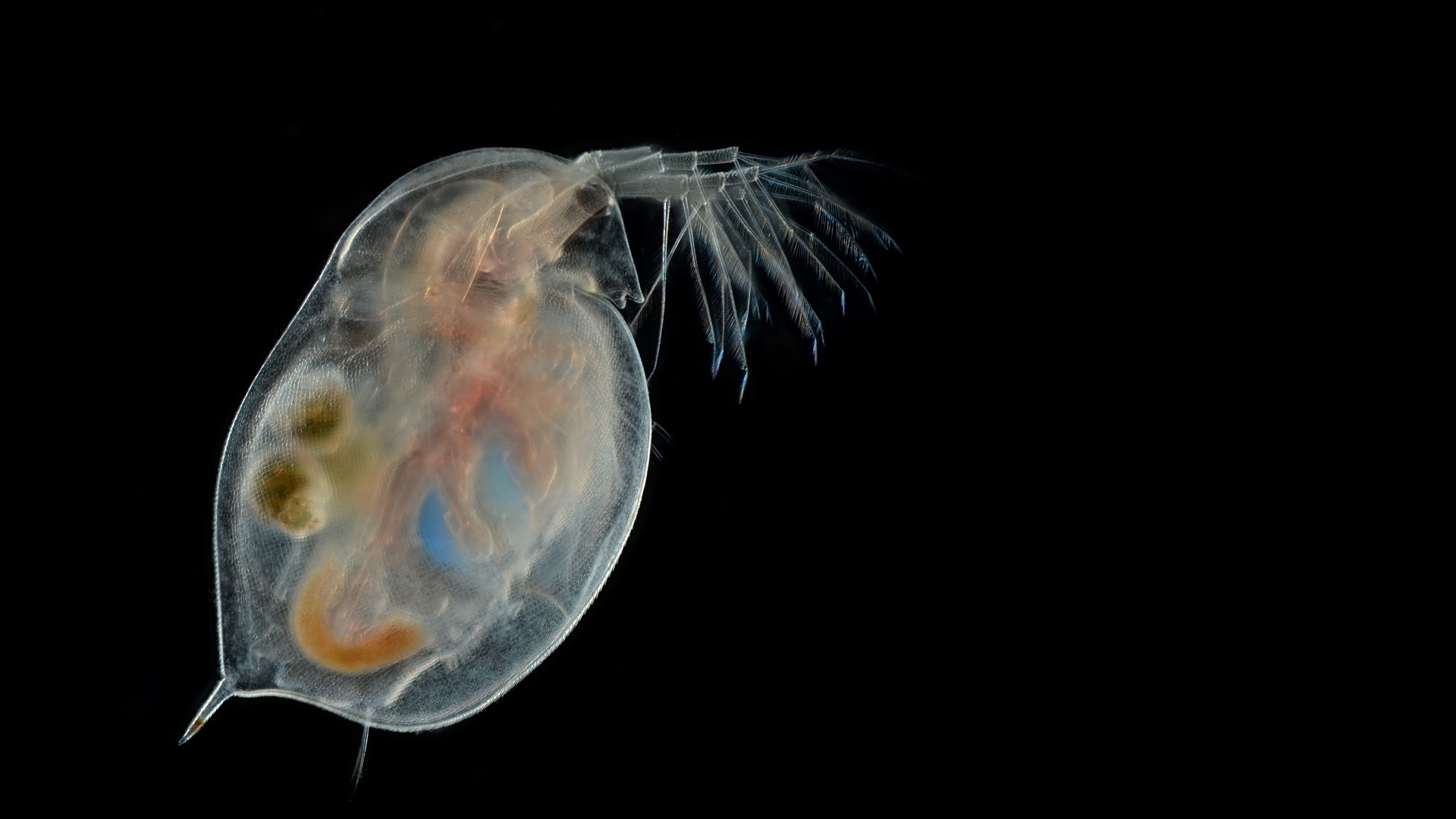Most people will be familiar with these tiny crustaceans from ponds or ditches, or from aquariums, where they serve as fish food. They are tiny little dots that move in rapid, jerky bounces by flipping the large antennae on their heads up and down.
Most people will be familiar with these tiny crustaceans from ponds or ditches, or from aquariums, where they serve as fish food. They are tiny little dots that move in rapid, jerky bounces by flipping the large antennae on their heads up and down.
Vital link
Water fleas are a vital link in the ecosystem of a pond or ditch. They eat green algae and bacteria, and, in turn, serve as food for larger animals, such as insect larvae, small fish, frogs and newts.
More females than males
Did you know that female water fleas do not need males to reproduce? They are able to incubate unfertilised eggs inside their bodies, and in this way, essentially make clones of themselves. This is why there are many more females than there are males. Only when their living conditions deteriorate – for example when there is a food shortage or it gets very cold – do they produce eggs which are fertilised by a male sperm cell. This results in offspring with wider genetic variation, which is handy from an evolutionary point of view, as it makes them more likely to be able to survive.

